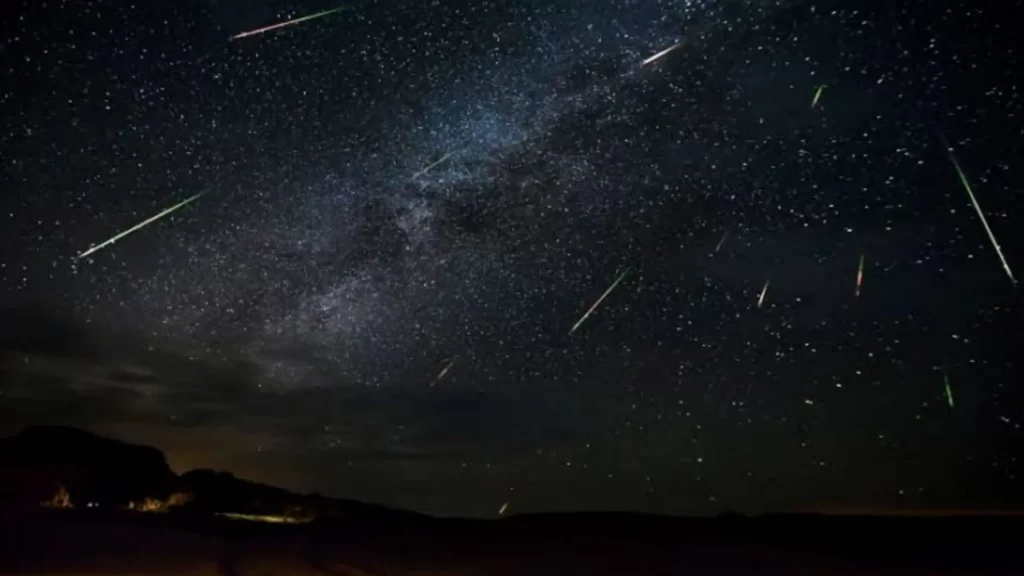
How You Can Observe The Orionid Meteor Shower
Throughout the year, there are different meteor showers that each have different properties and can be more or less easy to see.
During October, it’s time for the Orionids, one of the best-known meteor showers and also one of the most reliable. It’s also a wonderful opportunity to venture outside, observe them for yourself and discover what makes them special.
Shooting stars are not actually stars, but are caused by meteors. These are essentially rocks traveling through space. They may resemble tiny pebbles and sand grains in size or, in exceptional circumstances, larger things.
As our Earth moves in its orbit around the Sun, it may accidentally run into these objects. There’s a lot of stuff on Earth: about 48 tons per day.
Also Read:- Trevor Lawrence runs wild on injured knee in Jaguars win over Saints ‘Funny how that works’
As they pass through our atmosphere, the particles develop into meteors. The average speed of the Orionids is about 61 km/s. Interactions with our atmosphere cause them to burn up at altitude, briefly showing bright streaks in the sky.
Where are they from?
Orionid Meteor shower, however, are not random encounters with meteors. Earth sometimes passes through dense regions of space debris left by comets as they orbit the Sun.
Comets are dirty snowballs made of loose material held together by frozen gases. When Earth encounters comet debris, meteors can streak across the sky in a spectacular display.
A certain comet is connected to each meteor shower. The Orionids are of interest, not because there are so many meteors, but because they are associated with Halley’s Comet. The comet was first identified as periodic – an orbit around the Sun of less than 200 years.
Halley completes one orbit every 75 years. You may have missed it when it was near us in 1986, but you can still see its trail through the Orionids.
As Halley approaches the Sun, its ice turns into gas, leaving behind loose debris. It is about this time that the Orionid meteor shower appears.
Meteor showers are simple to enjoy because no specialized gear is needed. But we must be patient and hope for good weather. Here are some pointers to help you have a successful night of stargazing.
Time
Make sure to choose the right time. Each year, there are at least 12 meteor showers. They are named after the constellations, which indicate the direction from which meteors enter our atmosphere.
If you see streaks in one night, they will all appear to be emanating from one specific point (brightness) in the sky. For the Orionids that lies in the constellation Orion, to the upper left of his shoulder, marked by the star Betelgeuse. When you decide on a date, the most promising time of the night is usually in the second half.
The Orionids peak around mid-October each year. This year on Sunday, Oct. The 22nd will be in the hours after midnight, when the highest meteor rate is expected, according to the American Meteor Society.
You can typically observe 40 to 70 Orionid meteors every hour. If you miss the peak, you’ll still be able to catch them, you just won’t see as much.
Location
Light is your enemy. Even if the moon is not shining, you need to avoid bright light. Find a place that is not directly lit, but where you feel safe.
You can usually deal with light pollution if it’s not too widespread. But the darker the sky, the better the chances of seeing meteors.
In addition, a good view of the sky is essential. That doesn’t mean just looking at the bright ones, as meteors will streak across the sky.
Make sure you can see the sky as much as you can. It is also worth bringing a deck chair for a comfortable sleep.
Patience
To fully appreciate the darkness of the sky and see even the faintest meteors, you have to make sure your eyes are adjusted to dark conditions. This process cannot be hastened and takes 20 to 30 minutes.
Popping into your garden for a quick peek doesn’t work. You should wrap up warm and take something warm to drink with you to keep you going.
Remember that you can ruin your eyes’ dark adaptation by switching to a bright white light source. Cover your flashlight with a red filter if you need light. Give your eyes some time to adjust, and you’ll be astonished at how much you can truly see at night.
Rates are average for meteor showers (40-70 meteors per hour for the Orionids). They also specify the darkest sky possible and assume that the bright one is right above your head.
Sky watching
Meteor watching is a wonderful activity for everyone and does not require special equipment. It connects you to the universe and requires you to step out of your busy routine and slow down.
An exceptional chance to interact with the sky is provided by the Orionids. So head out there and explore.